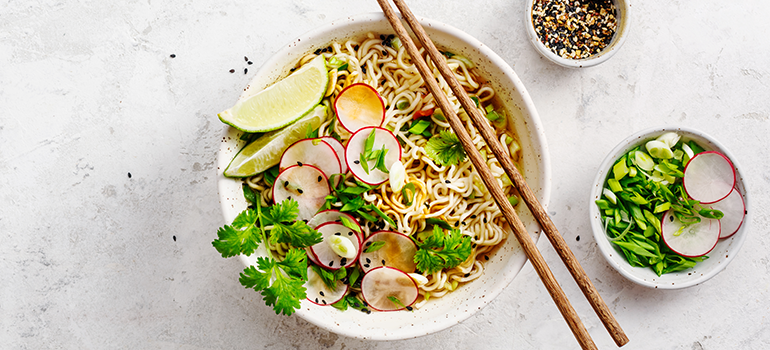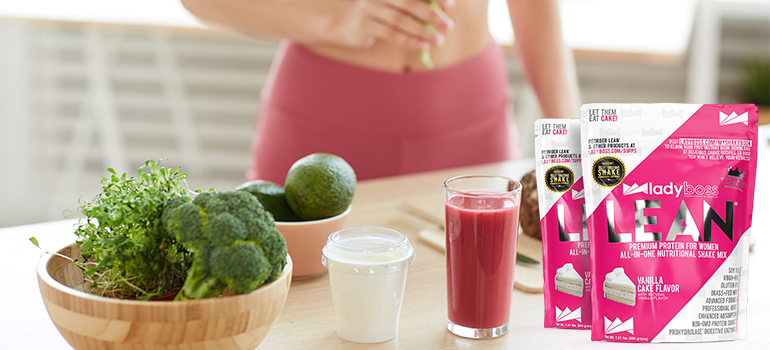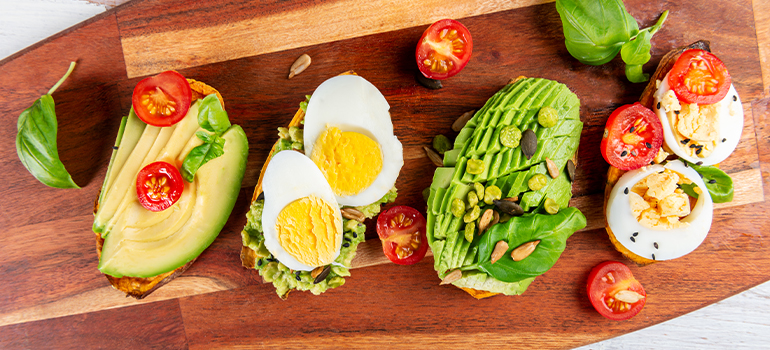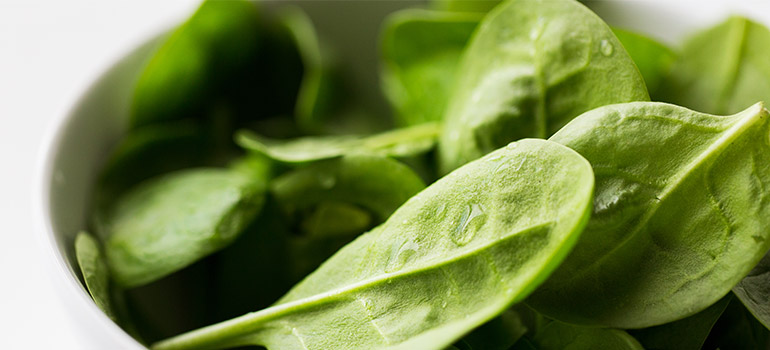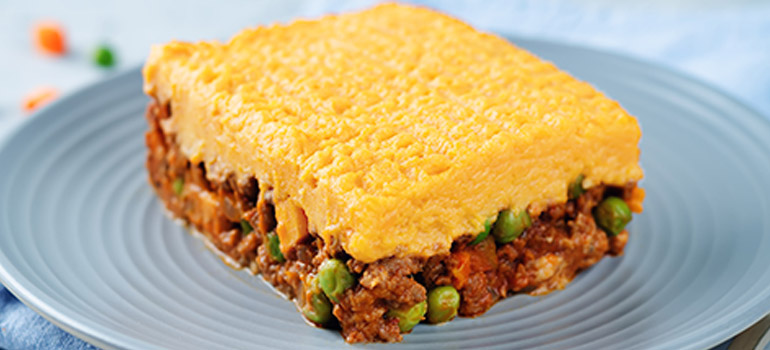If you’re into eating healthy and you love Asian-style foods, then you need a go-to miso ramen recipe! Miso ramen has minimal ingredients, so it’s quick and easy to prepare. Plus it’s packed with unique, delicious flavors. While most miso ramen recipes are delicious, not all these dishes are equally nutritious. Some restaurants’ recipes sometimes include extra ingredients. So it’s best to create your miso ramen dish in the comfort of your own kitchen.
Unfortunately, noodles tend to have a bad rap when it comes to healthy eating. It seems everyone is carb-phobic these days! But there are plenty of ways to make pasta dishes healthy. There is nothing to fear with miso ramen, since it’s a protein-packed food with a great ratio of 2 grams of protein for every 25 calories consumed. A favorite among vegetarians and vegans, this is a complete plant-based protein packed with health benefits.
Don’t worry, we’ll get into details on all the miso health benefits. And I’ll also provide you with a simple, crazy-delicious miso ramen recipe along with some quick tips to help make miso ramen a fun staple in your meal prep rotation.

Health Benefits of Miso
Not only does miso ramen taste amazing, but it also includes a ton of health benefits. Miso is typically made up of fermented soybeans and barley. There are even variations of miso base made with chickpeas and other lentils. As a fermented food, miso provides the gut with beneficial bacteria that help us to stay healthy and that aid in digestion. It has been shown that regularly consuming foods rich in probiotics can help build your immune system and help you recover faster from infection.
Studies also show that consumption of miso ramen can help decrease cholesterol, lower blood pressure, and act as a natural cancer prevention by fighting cancer cell growth. In addition, adding miso ramen into your diet will help you get plenty of essential minerals and is also a good source of various B vitamins, as well as vitamins E and K.

Ramen Options and Ingredients
The ramen noodle is the most popular of all Japanese noodles and comes in many forms, shapes, and lengths. Most ramen noodles are made from four basic ingredients: wheat flour, salt, water, and an alkaline agent (kansui). Here in America, the most well-known ramen noodles come pre-cooked in the form of instant ramen. But you can actually make a mouth watering bowl of miso ramen at home with dried or fresh ramen noodles found at your local grocer. Sun Noodle is an amazing brand of fresh ramen that uses quality ingredients and can be found in most grocery stores.
If you have a local Japanese or Asian grocery store in your area, you can find a wide variety of fresh ramen noodles in the refrigerated section. If you’re unable to find fresh ramen noodles, you can still create healthy miso ramen with dried ramen noodles. Dried ramen noodles are straight, pre-packaged, and sold in bundles. HIME is a great dried ramen noodle brand that I found at my local Wal-Mart or can be found on Amazon here.

Miso Options and Ingredients
Miso is available in many forms, each of which has its own flavor and uses. Miso paste is one of the most versatile forms of miso. And it’s what we will use to help create our miso ramen broth. Each variation will help create a different flavor for your miso ramen. So don’t be afraid to get creative and experiment with the provided miso ramen recipe. Below I’ve listed the variations of miso you can choose from:
- White Miso (Shiro) – This miso is made from soybeans that have been fermented with a large percentage of rice. Shiro means “white” but color can range from white to light beige. This miso will give your ramen broth a sweet taste. White miso is commonly used in condiments like mayo or salad dressings, as well as other light sauces.
- Yellow Miso (Shinsu) – Yellow miso is fermented for slightly longer than white miso. Yellow miso is adaptable in a wide range of recipes and will give your ramen broth a mild, earthy flavor.
- Red Miso (Aka) – If a recipe calls for dark miso, you’ll want to use an aka or red miso. Red to dark brown in color, this type is made from a higher proportion of soybeans, is fermented for up to three years, and is saltier and deeper in flavor. Because of it’s long fermentation period, it can overwhelm mild dishes. Aka miso will give your ramen broth a deep, bold flavor.
- Barley Miso (Mugi) – Made from barley and soybeans, mugi miso also has a longer fermentation process. It has a strong barley aroma, and if used in your miso ramen recipe you will enjoy a mild and slightly sweet flavor.

Miso Ramen Toppings
As you can see, putting together a miso ramen dish can be a creative process with lots of different options. You also have a good range of options when it comes to what toppings to add to your miso ramen recipe. Be creative! Here are some of my favorite miso ramen toppings:
- Tofu (drained and cubed)
- Ground pork
- Chicken breast (cut into strips)
- Hard or soft-boiled egg slices
- Fresh or frozen spinach
- Corn
- Snow peas
- Fresh bean sprouts
- Shiitake mushrooms
- Bamboo shoots (fresh or canned)
- Green onions
- Dried seaweed
- Small pat of butter
How to Make Miso Ramen
Even though cooking and preparing miso ramen may look intimidating, you don’t have to be a professional chef or already know how to make ramen to create a tasty miso dish. As stated above, the options are endless so feel free to swap out different variations of miso paste or try different topping combinations for a new twist on your miso ramen dish every time! Most miso ramen can be prepped and cooked in under 30 minutes, making it an awesome go-to recipe to have on hand when you’re short on time but don’t want to sacrifice flavor. The recipe below is a quick, delicious way to make miso ramen. Cooking and prep time clock in at just under 30 minutes. Enjoy!
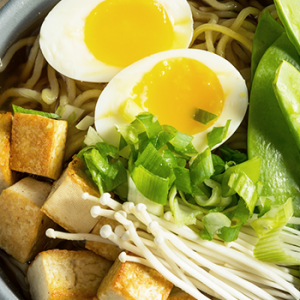
Healthy Miso Ramen
Ingredients
- 2 tbsp of toasted sesame oil divided
- 1 bunch of scallions sliced, white and green parts separated
- 4 cloves of garlic minced
- 1 c bamboo shoots
- 1 tbsp finely grated fresh ginger
- 4 c of water
- 3 tbsp of white miso
- 1 ½ tbsp of reduced-sodium soy sauce
- 1 ½ lb chicken breast cut into strips
- 4 c of bok choy
- 4 oz fresh or dried ramen noodles
- 4 oz shiitake mushrooms stemmed and sliced (2 cups sliced)
Instructions
- Heat 1 tablespoon of oil in a large saucepan or Dutch oven over medium-high heat. Add scallion whites, garlic and ginger. Cook until fragrant, about 1 minute. Stir while cooking.
- Add water, miso, soy sauce, and the remaining 1 tablespoon oil. Bring to a boil. Stir in chicken, bok choy, noodles, and mushrooms. Cover and return to a boil.
- Uncover. Reduce heat to medium. Cook for 3 to 5 minutes, stirring, until the chicken is cooked through and the vegetables are tender. Serve your miso ramen dish sprinkled with the scallion greens.
Miso Ramen Quick Tips
- Remember that different colored miso paste will produce different results in flavor in your miso ramen dish: white miso is a milder flavor, yellow miso is a medium more earthy flavor, and red miso will produce the boldest flavor.
- Miso paste can keep in your refrigerator for up to a year. Don’t be afraid to stock up on different variations to create a new spin on your miso ramen every time!
- Most miso ramen dishes can be prepared in under 30 minutes and make a great go-to meal when you’re short on time.
- Although the color of the ramen noodles is yellow-ish, it’s important to note that they are not egg noodles.
- Choosing fresh vegetables and tofu as toppings will help keep your miso ramen vegetarian and vegan-friendly.
- Learning how to make ramen is easy. So easy, in fact, that Asian noodles don’t need to be cooked in salt. So don’t bother adding salt to your water.
Dashi is an essential ingredient in many Japanese dishes. It is a fish stock that you can add to your miso paste to give it a more savory, salty taste.
- You can make an even healthier version of miso ramen that fits under the LadyBossⓇ blocking method. Just be sure to include fresh ramen noodles and top your miso ramen dish with a protein source and fresh vegetables. You can find great recipes for a variety of dishes in the LadyBossⓇ Pocket Personal Trainer.
Nutrition Information
Serving size: About 2 cups
Per serving: 383 calories; 16 g fat(3 g sat); 7 g fiber; 33 g carbohydrates; 28 g protein; 80 mcg folate; 76 mg cholesterol; 2 g sugars; 0 g added sugars; 6,106 IU vitamin A; 41 mg vitamin C; 180 mg calcium; 4 mg iron; 729 mg sodium; 842 mg potassium
Nutrition Bonus: Vitamin A (122% daily value), Vitamin C (68% dv), Iron


